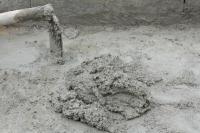Subtropical Zone: How Animals Survive Here
It is amazing to know that animals can adapt very well to their environment - also in the subtropical zone. But how do these creatures manage to find food every day and escape possible enemies? If you too would like answers to these interesting questions, you should find out more about this exciting topic in the text below.
Every animal lover has certainly already dealt with animals in the subtropical zones. It is really admirable under what harsh conditions survival is actually possible for the animals. But how do the animals manage to successfully fight the tough struggle for survival every day. Living in a subtropical zone is the hardest to master. It would be unthinkable for a person to live in such areas or to survive at all. How do the animals do it in such areas?
What actually is a subtropical zone?
- The subtropical zones spread lengthways, near the equator, everywhere. One can conclude from this that there is an extremely hot climate in these areas.
- A distinction is made between several types of subtropical climate, such as the dry subtropics, in which a so-called solar climate prevails, and the winter-humid subtropics. There is more of a Mediterranean climate here.
You have now received a brief insight into the subtropical zones. Now you want to know for sure how the animals that live there cope with their everyday lives. In this description, this is explained using animal examples.
Animals as survivors
- The fennec: This is a small, fox-like mammal with beige-brown fur and noticeably large ears. The fennec is active at night or at dusk and is therefore not exposed to the heat during the hunt. His ears help him to hunt successfully at night and warn him of dangers early on. During the day they help to cool down, because heat is dissipated faster. Invertebrates and smaller vertebrates form the food source for the small desert fox.
- The paws of the animal are hairy even on the soles. Quiet movement and simultaneous protection from the hot desert sand are thus optimally guaranteed. The fennec spends most of the day in a small burrow. This provides cooling and protection.
- Dromedaries: The big brown animals are often mistaken for camels. The clear difference, however, lies in the number of humps on its back - a camel has two humps, while a dromedary can be recognized by its single hump. As often erroneously asserted, there is no water stored in these humps, but fat. During longer periods of starvation, a dromedary can feed on the stored fat for a while, because from it it also gains water and energy.
- When dromedaries drink, they take in several liters. The body temperature of these animals only rises very slowly, so that they do not sweat too quickly and do not lose water unnecessarily.
- The underside of the feet is set with horn. The toes are divided in two. A dromedary can thus move on sandy surfaces without sinking into the sand. Since these animals consume even very salty and thorny plants, they have no difficulty in finding the right food.
- Termites in subtropical zones: These animals are unpopular, but they should not be underestimated, because termites also know how to help each other in the hot climate of subtropical zones. Almost everyone knows the huge termite mounds. These can have different shapes and sizes. The state-forming insects do not search for food, but have developed their own strategy to survive in the harsh climate of the subtropics.
- In the cooled interior of their buildings, these insects grow their own mushrooms. Termites feed on these.
Animals usually need certain habitats in order to feel comfortable and at home. So ...
You see - there is a lot to be said about the life of animals in subtropical areas. The species are diverse. Each of the numerous species has developed its own survival strategy, be it through striking outgrowths on the Bodies, as is the case with the dromedary, or be it through protective structures such as the accommodation of the Fenneks and the Termites.


